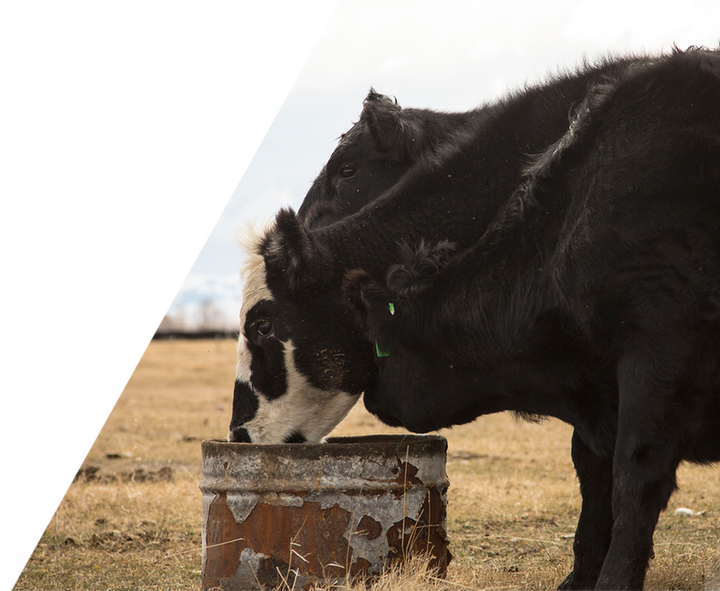


Pasture health in Oceania
Learning to navigate in a sea of uncertainty
THE CHALLENGE
New Zealand and Australia: two countries at the foot of the world. Nicknamed “Down under”, collectively the two countries are known as Oceania. Separated by the Tasman sea, residents of both countries will fiercely declare their differences that mark them out as two separate countries. Yet both countries also share a lot in common.
Oceania boasts a lot of dairy cows: 6 million in New Zealand and 1.6 million in Australia. Both countries have a strong reliance on feeding pasture, New Zealand more so than Australia. And both countries can experience extremes of weather, Australia more so than New Zealand.
Pastoral feeding has been called a competitive advantage in this part of the world, particularly in New Zealand where high quality C3 grasses grow most of the year. A pasture’s big plus is that it is an abundant and cost-effective source of dry matter. However, as locals are aware, pastures are inherently variable. Chemical composition of pasture changes with weather, sunlight and grazing frequency.
Pastures are also prone to mould growth. Changeable weather (implicating uneven mould growth) and different grazing techniques used to try to manage chemical variation (implicating different decaying matter at the base of the pasture) leave room for varying populations of mould. In addition, many pasture species have endophyte fungi growing within them, either wildtype endophytes or intentionally infected for reasons of protecting the pasture from insect damage.
Both mould and endophytes can produce mycotoxins, and the pasture-based mycotoxins are often different to the types of mycotoxins typically found in feed concentrates.
The level of mycotoxins in the pasture and the impact on animals is regulated by weather, grazing, pasture history and agronomic practices. Mycotoxins produced in pasture are not always easily measured. For example, one of the derivatives of ergot mycotoxins most commonly found in grass is ergovaline, which remains difficult to reliably find in pasture with a high degree of repeatability.
To further confound the challenge, pasture grows so fast and rotational grazing is so quick that the grass virtually replaces itself regularly. The result is that absolute mycotoxin levels in pasture can be very hard to get a firm gauge on, and being so hard to pin down, it can be tempting to dismiss the significance of them.
How do farmers respond?
What can producers do in such a sea of uncertainty? Is there a way that farmers can navigate their way through? What tools are available in a situation where it is difficult to quantitatively measure mycotoxins in a timely fashion?
Producers rely on several management and husbandry tools that they have at their disposal;
COW SIGNALS
In a grazing situation, farmers receive many cow signals that they learn to interpret. It is very important that farmers sharpen their skills in identifying behaviour that implicates mycotoxins. In grazing ruminants, common symptoms of pasture based mycotoxins include nervous symptoms. Cows can become flighty, as normally docile animals become uncharacteristically on edge and easily spooked. Cows will tend to bunch together, particularly in corners of paddocks.
In the milking parlour, cows fidget a lot, kick at their cups, and often milk production will fall with the onset of these symptoms. Cows can have unusually depressed looks, drooping their heads with noticeably sunken eyes. One tell-tale sign is excessive drooling, with long strands of ropey saliva hanging from their mouths.
On close examination, the skin of cows may be seen to twitch, and cows will become very active, flicking their tails around. At an extreme end of this behaviour, cows will begin to lose coordination in their muscles and stagger, especially when they are being moved by the farmer.
Walking through the herd, it may be clear that there is a wide range of manure consistency.
In a grazing situation common in Oceania, farmers get to know their animals very well, and can easily pick up on these symptoms. When cows are under the sort of mycotoxin challenge that produces these effects on cows, milk production inevitably drops, and often somatic cell counts will climb at the same time.
Diagnosis with a mycotoxin binder
Inclusion of a mycotoxin binder at the onset of these symptoms can show very startling results, confirming the suspicion that the symptoms are generated by mycotoxins. If this approach is used in a diagnostic sense, then it is very important that the mycotoxin binder has the widest range of efficacy, and should have published peer reviewed work in the target species. It should also be effective at a low inclusion rate and not interfere with other components of the diet.
Thankfully, Mycosorb A+, from Alltech fits these requirements nicely. Mycosorb A+ is often used in a diagnostic process on-farm. A relatively high dose is put in for 10 days to get on top of the symptoms, and then it is titrated back to a level that controls the symptoms.
Education
Farmers in general are very curious people and are quite keen to stay up to date with science and technology. Being aware of testing options, feeding options, mitigation strategies and symptoms in cows is an important part of many producer’s strategy.
Other measures:
The burden of mycotoxins can be reduced by grazing management. Avoiding overgrazing helps, so animals don’t eat down into the layer of the sward where most of the decaying material is. Dilution of “hot” pastures by making other feeds a greater part of the ration may also help. To do this successfully, it helps to understand the mycotoxin levels in the other feeds as well, and this is where Alltech’s 37+ test has a very useful application.
Summary
Any vegetable matter can have mycotoxins present, produced by the moulds growing on them. While mycotoxins are often thought of in association with various concentrates and by-products, pasture is also a common source of mycotoxins, so naturally it’s important to stay on top of this risk.
In Oceania, pasture remains a cornerstone of ruminant nutrition, and farmers in the region have developed an acute awareness for reading cow signals to help identify mycotoxins, despite the inherent challenges involved.
With Alltech continually developing methods to detect, and combat the adverse effects of Mycotoxins, there’s always help at hand for problematic pastures, whether you’re Down Under or just down the road.
For more information on how Alltech’s Mycotoxin Management team can assist you with detecting or combatting mycotoxins in pastures, please visit www.knowmycotoxins.com.